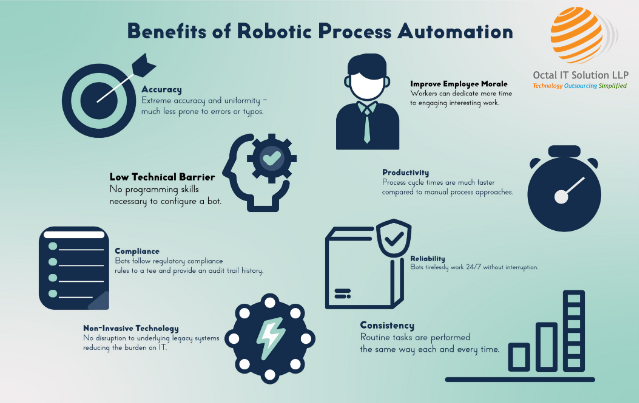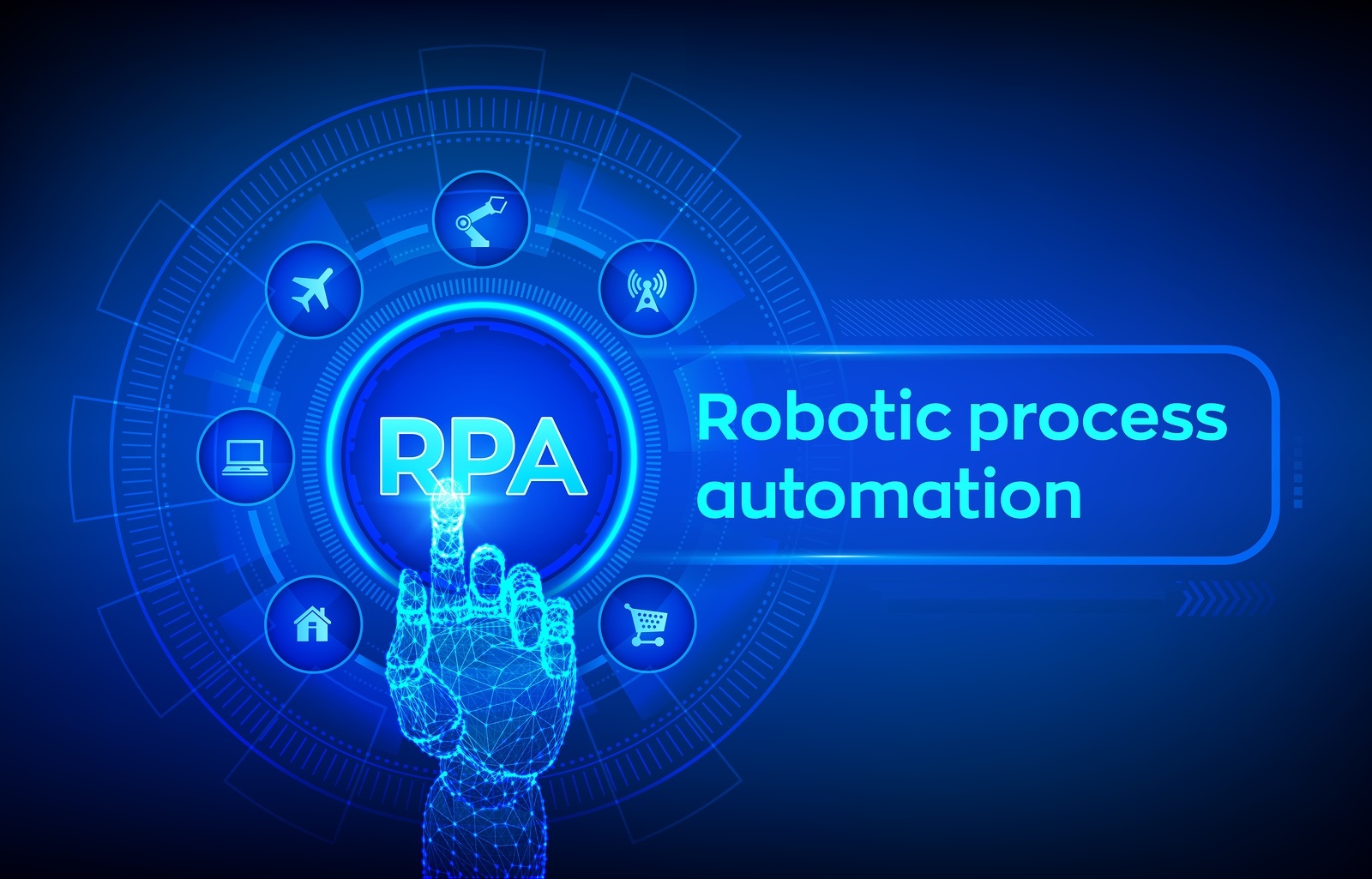Enterprise Resource Planners, or Enterprise Resource Planning (ERP) software, has gained immense popularity among companies over the past decade. ERP systems make communication within the company easier, simplify and coordinate workflows, and automate routine tasks.
Robotic Process Automation, or RPA, is closely related to ERP systems but can be useful in its own right. RPA technology, like ERP, is constantly evolving, making it more widely available, but its essence is constant: a software robot performs specific workflows instead of people. Using robotic process automation can thus provide your business with a number of benefits, which are detailed below.
What exactly is robotic process automation, i.e. RPA?
RPA software basically automates specific workflows within an enterprise. They mimic the process a person performs and execute it automatically. Thus, the task is not to be performed by the workers, but by a software robot instead. This may sound scary, but there is no need to worry, human labor will definitely be needed even if you use it, because RPA software robots are not intelligent in themselves, they can only perform a specific task.
RPA software allows anyone to use a software robot to replace one or more workflows previously performed by humans. The technology can be used in many jobs and in an ever-widening spectrum due to continuous development. Robotic process automation can be the perfect alternative for everyday, repetitive, time-consuming, monotonous tasks. This allows employees to focus on performing more important and creative tasks.
What tasks can be performed with robotic process automation?
There are many different process automation software robots that can perform really different tasks. Typical applications include accessing certain systems with IDs, data entry, data transfer between different interfaces, and various IT support tasks such as password resets, system monitoring, and data aggregation. In addition, they can perform calculations or financial summaries, but they can also perform other tasks that can be standardized and described by rules.
What benefits can your business get from using RPA?

Speed up workflows and save time with RPA
Using robotic process automation, a specific task, such as inserting data from documents into an Excel spreadsheet, is performed automatically by a software robot. You know exactly where you need to copy your data, so you can do it without thinking, in a matter of seconds. The same for workers to take longer to complete, and not too enjoyable, is not a rewarding task. So using RPA frees up time for employees, giving them more time to perform meaningful tasks while a monotonous workflow is done in a few minutes by a software robot instead.
Make the performance of tasks by RPA more predictable
By using RPA software, certain tasks are performed by software robots instead of humans, whose work is more predictable than humans, and their work pace is steady due to automation. Unlike people, they don’t get tired, they don’t need to rest between tasks. Because they constantly perform a given workflow smoothly, according to strict rules, they do not make mistakes. In addition, their work can be monitored and tracked, can be monitored at any time, and can intervene if necessary. You can always count on RPA software if you are striving for the success of your company.
Increase customer satisfaction by using RPA
Using RPA improves the quality of process execution, reduces the number of errors and the possibility of errors. And by automating monotonous and inferior tasks, work ethic can improve among employees and focus their energies on performing more useful tasks. And with fewer mistakes and more satisfied employees, customer satisfaction can also increase.
How do you get started with process automation?
Robotic process automation can be extremely useful for all businesses, small and large, and can make them more efficient, so it is definitely worth starting to use. RPA is also a good solution because it does not require a costly IT investment, it is not necessary to modify or expand the existing systems, and the operation of the given software robot can be perfectly integrated into the operation of the company.
When implementing RPA, you must first identify and prioritize the processes that can be automated, and then use suitable software to determine the sequence of instructions that the software robot will execute. Our expert colleagues will guide you through the mysteries of RPA with a high level of expertise and precision throughout the implementation and follow-up phase and will help you to reap the benefits of its application as soon as possible. If employees are skeptical about automation or are afraid of losing their jobs, it may be beneficial to gradually introduce the use of RPA, gradually applying it in more and more areas. It is likely that they will soon enjoy the benefits of robotic process automation.














